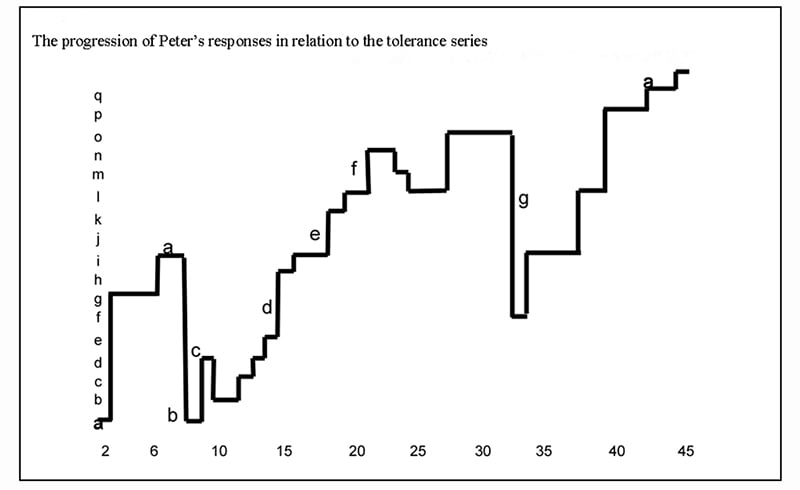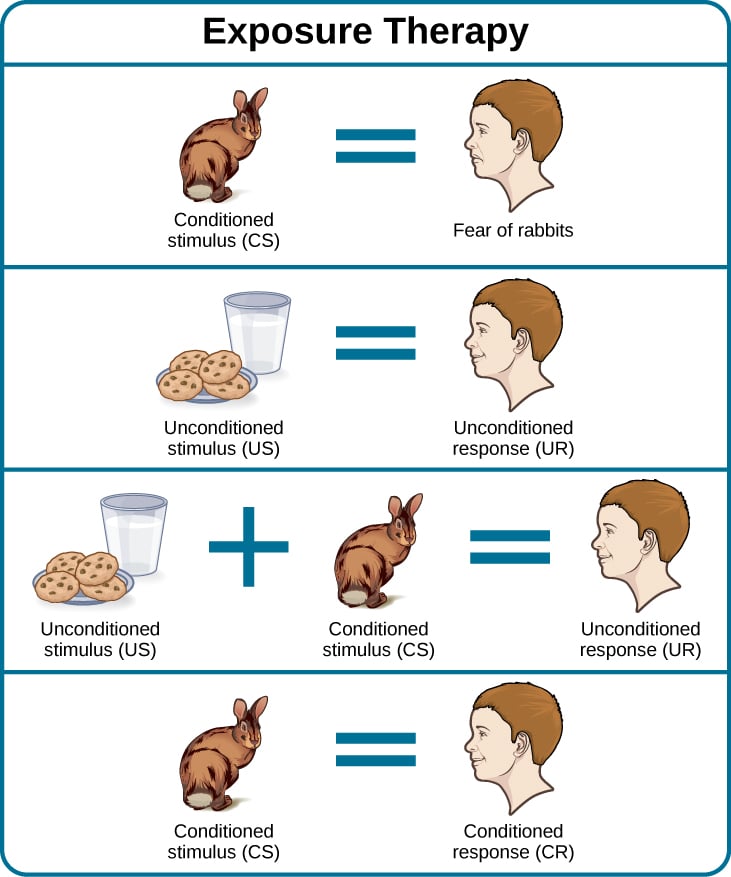On This Page:
Jones, M. C. (1924). A laboratory study of fear: The case of Peter. Pedagogical Seminary, 31, 308-315.

Aim
Mary Cover-Jones studied several children to investigate the best way to remove fear responses in children.
This was important as Watson & Rayner (1920) had demonstrated that fear could be produced experimentally in a child (little Albert) but although they had planned to remove his phobia of rats using classical conditioning, he was taken away before this could happen.
- To investigate whether a phobia in a child could be counter-conditioned.
- To demonstrate whether counter-conditioning would generalize to other objects.
Procedure
The case described was of ‘Little Peter,’ an active, easily interested, intelligent boy (with an IQ of 102). He was 2 years 10 months when Jones began observing him and his general behavior was typical of a child of his age.
On the first day with Peter, Jones watched him playing with toys, including some beads. An experimenter (who was out of sight) put a white rat into Peter’s cot. Peter screamed and fell over.
He was moved away, leaving his beads behind. Another child, Barbara, was put in his cot.
When the rat appeared, she was unafraid and picked the rat up. When the rat touched Peter’s beads, he protested, saying, “My beads,” but he didn’t object when Barbara touched them.
The next day Peter’s reactions to different situations and objects were observed.
| Object(s) | Peter’s Reaction |
|---|---|
| white ball, rolled in | picked it up and held it |
| fur rug over cot | cried until it was removed |
| fur coat over cot | cried until it was removed |
| cotten | cried |
| withdrew hat with feathers | cried |
| blue woolly jumper | looked, turned away, no fear |
| white cloth rabbit | no interest, no fear |
| wooden doll | no interest, no fear |
Peter was also shown a live rabbit and he was more afraid of this than of the rat, so a rabbit was chosen for counter-conditioning.
Peter had daily play sessions with three other children and the rabbit.
The other children (Laurel, Arthur, and Mary) were unafraid of the rabbit. Peter was sometimes observed
alone to observe his progress. New situations were used to get Peter closer to the rabbit
Six people (psychology students and instructors) were given the descriptions A-Q in a random order and asked to put them in order of improvement. The resulting list is called a tolerance series.
Peter’s different reactions to the rabbit (the tolerance series)
- Rabbit in cage anywhere in room causes fear
- Accepts rabbit in cage 12 feet (4 meters) away
- Accepts rabbit in cage 4 feet (1.3 meters) away
- Accepts rabbit in cage 3 feet (1 meter) away
- Accepts rabbit in cage close by
- Rabbit accepted free in room
- Rabbit touched when experimenter held it
- Rabbit touched when free in room
- Peter reacted badly to rabbit e.g., throwing things at it but also imitated it
- Rabbit allowed on tray of high-chair
- Squats beside rabbit
- Helps experimenter to carry rabbit to cage
- Holds rabbit on lap
- Alone in room with rabbit
- In playpen with rabbit
- Fondles rabbit
- Lets rabbit nibble fingers
Findings
Sometimes Peter’s behavior improved (e.g., between sessions 11 and 22, from b to m), and sometimes it worsened – e.g., in session 33 when he was scratched by the rabbit (so it fell from n to f).
However, the changes were not continuous or equally spaced in time.
In the figure below the scale along the x-axis is the session number.

Sometimes Peter was observed frequently (e.g., twice a day in sessions 11 and 12), at other times less frequently (e.g., two months between 7 and 8).
Just before this long break, Peter had touched the rabbit following positive comments from the other children, such as “Arthur saying “Peter doesn’t cry when he sees the rabbit come out.”
Peter was then ill in hospital. When he came back after this long break, a big dog jumped at him and his carer, scaring both of them.
Following this event, from session 8 onwards, classical conditioning was used to help Peter. He was given food he liked at the same time as the rabbit was brought within sight in its cage.
This pairing of nice food and the rabbit was repeated, moving that rabbit closer but only as close as Peter would allow and still carrying on eating.

Other children also acted as role models. In session 9, the rabbit made Peter cry. Another child ran over, saying, “Oh, rabbit.” Peter followed and watched, so the child acted as a role model to help Peter to move closer to the rabbit.
In session 21, an experimenter sat the rabbit in front of Peter while he was eating but he cried out, “I don’t want him,” and pulled away. Another child sitting nearby held the rabbit. Peter then wanted the rabbit on his lap and held it briefly.
Peter was sometimes asked about what he did at the laboratory. At the start, he didn’t mention the rabbit but later, he would say, “I like the rabbit”. He also lost his fear of cotton, fur coat, and feathers.
His reaction to rats and the fur rug with a stuffed head improved, but he didn’t like them as much as the rabbit. He also accepted new animals, such as frogs, worms, and a mouse.
Conclusion
Classical conditioning and social learning both helped to decondition Peter. This deconditioning also reduced the fear which had generalized to other objects, so it helped Peter to cope with new animals.
Critical Evaluation
Jones studied Peter over a long period of time, so he was able to track his progress showing the changes clearly. She made detailed observations, so the data was very thorough.
In designing the tolerance series, Jones asked other people to put the items in order. This meant that she avoided introducing bias herself.
Jones developed two techniques to help to reduce Peter’s phobia (classical conditioning by pairing the rabbit with food and social learning using the other children as models).
These techniques were effective in counter-conditioning him and have been followed up by other researchers. Wolpe (1990, p 7), who is responsible for the development of modern systematic desensitization, described Jones as “a pioneer in behavior therapy.”
However, the gaps between Jones’ sessions with Peter were variable, so progress could be due to changes over time rather than the deconditioning process.
Also, Jones used two different techniques (classical conditioning and social learning) as well as other people who made Peter feel confident. This makes it difficult to tell which factor was most effective in his recovery.
Questions
- Explain why it was important that the other children were not afraid of the rabbit.
- In general, food is only effective in reconditioning children (rather than adults). Why might this be the case?
- Why did the response of his carer to the big dog make such a difference to Peter’s fear?
- Suggest two other objects that Peter’s fear might have generalized to.
References
Jones, M. C. (1924). A laboratory study of fear: The case of Peter. Pedagogical Seminary, 31, 308-315.
Watson JB & Rayner R (1920). Conditioned emotional reactions. Journal of Experimental Psychology, 3 (1): 1-14.
Wolpe J (1990). The Practice of Behavior Therapy. Oxford: Pergamon Press.

